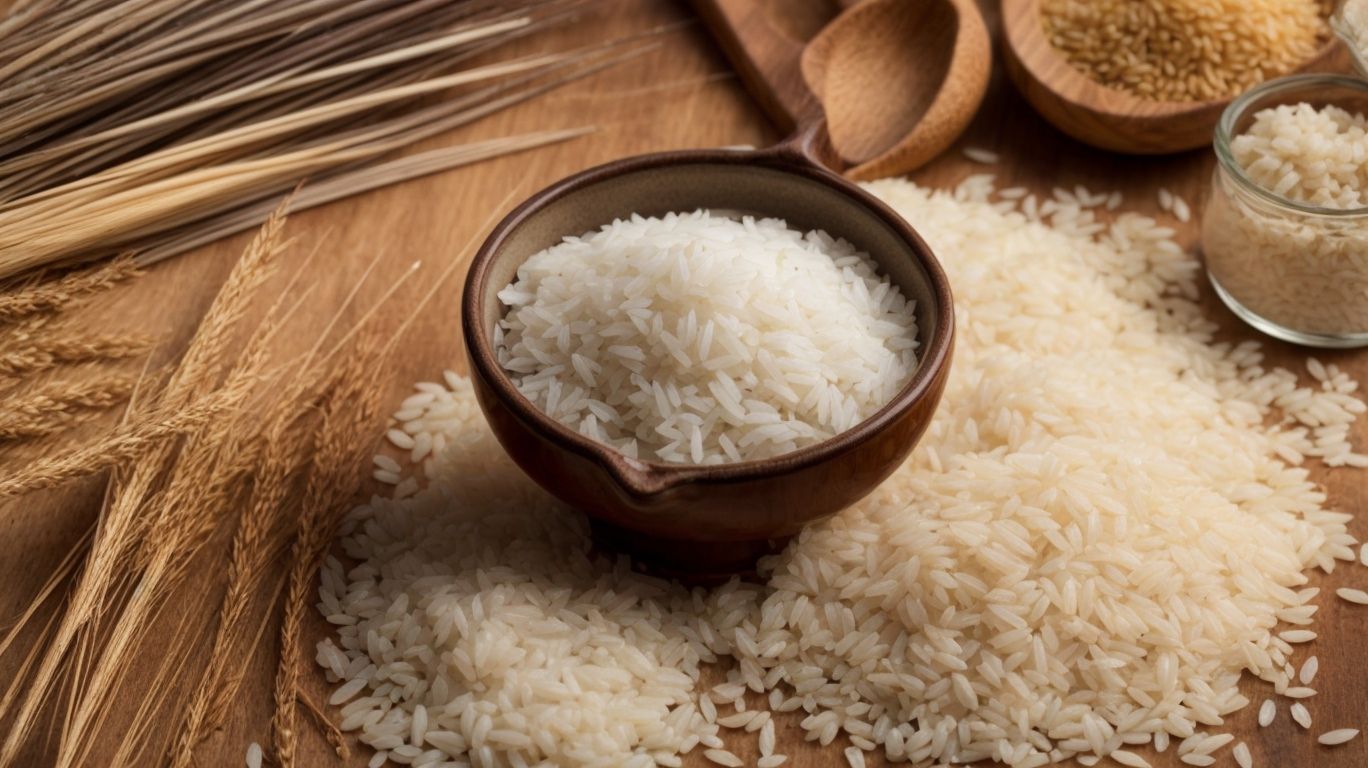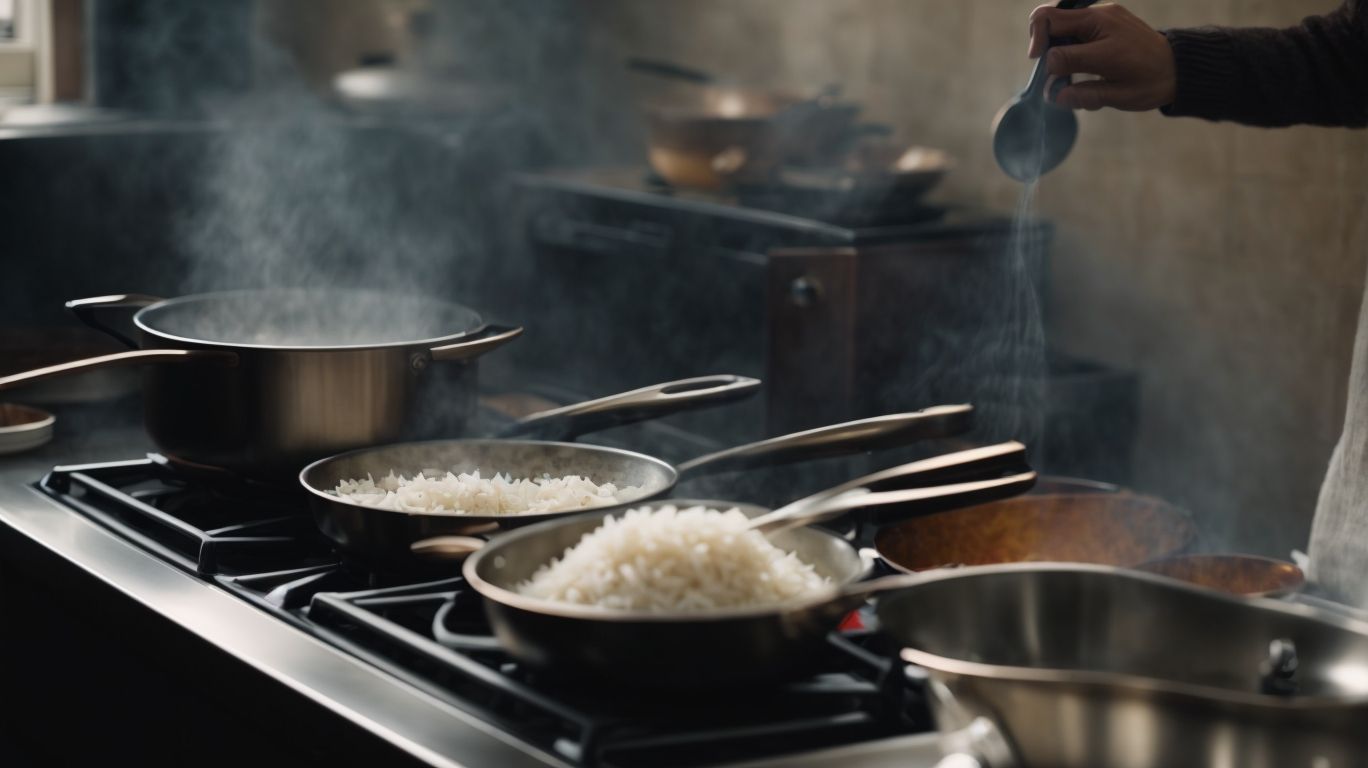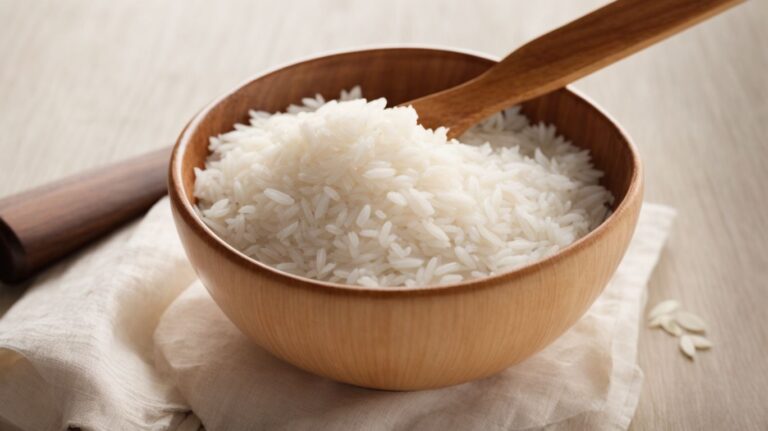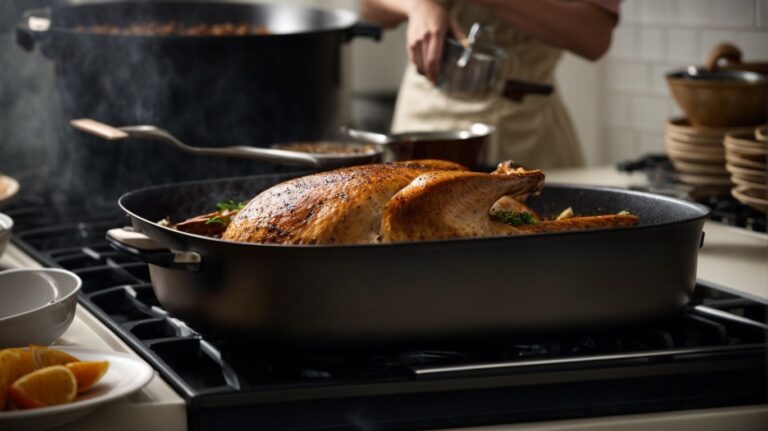How to Cook Rice Without a Rice Cooker?
Are you looking to elevate your cooking skills by mastering the art of cooking rice without a rice cooker? Look no further!
In this step-by-step guide, we will walk you through everything you need to know to cook perfectly fluffy rice every time. From the essential tools you’ll need to handy tips for achieving that perfect texture, we’ve got you covered.
So, grab your pot or saucepan, measuring cup, rice, and water, and let’s get cooking!
Key Takeaways:
What You Will Need
To prepare perfect rice, you will need a pot or saucepan, a measuring cup for accurate portions, water to cook the rice, the rice of your choice, and optionally some salt for seasoning.
Having a suitable pot or saucepan is essential as it provides the vessel for cooking the rice evenly. The measuring cup plays a crucial role in ensuring the right rice-to-water ratio, leading to perfectly cooked grains without being too mushy or dry. Water acts as the medium for cooking the rice, allowing it to absorb the moisture and expand.
There are various types of rice available, such as long-grain, short-grain, jasmine, or basmati, each offering unique flavors and textures. Choosing the right type can significantly influence the final dish. Adding a pinch of salt enhances the overall taste profile, bringing out the natural flavors of the rice.
Pot or Saucepan
Choosing the right pot or saucepan is crucial for cooking fluffy and perfectly tender rice.
When selecting a pot for cooking rice, it’s important to consider the size based on the quantity of rice you typically prepare. Using a pot that is too big can result in uneven cooking, while a pot that is too small may lead to overflow or uneven heat distribution.
The material of the pot is also key; opt for a heavy-bottomed pot to ensure even heat distribution and prevent burning. Stainless steel and aluminum pots are popular choices for cooking rice due to their durability and heat conductivity.
Don’t overlook the importance of a well-fitting lid. A tight-fitting lid helps trap steam, allowing the rice to cook evenly and retain moisture, resulting in fluffy grains.
Measuring Cup
A reliable measuring cup ensures the accurate ratio of water to rice, a key factor in achieving perfectly cooked rice every time.
Without proper measurements, the texture and taste of the rice can be compromised. Using a measuring cup eliminates any guesswork, allowing you to consistently achieve the ideal balance between fluffiness and moisture in your rice. It’s essential to follow the recommended water-to-rice ratio as even small deviations can affect the final dish. This precision is particularly crucial for more delicate rice varieties like sushi or jasmine rice where the exact water levels can make a significant difference in the overall outcome.
Water
Water serves as the essential cooking medium for rice, playing a critical role in determining its texture and consistency.
The provided text is already formatted with HTML tags for bold text and paragraph. Since the text is already structured appropriately with the necessary HTML elements, no further formatting is required.
Rice
The choice of rice variety, whether long grain or short grain, greatly influences the texture and flavor of the final dish.
Long-grain rice, such as Basmati and Jasmine, tends to have a lighter, fluffier texture when cooked, making it perfect for dishes like pilafs, stir-fries, and curries. On the other hand, short-grain rice, like Arborio and sushi rice, has a stickier texture and is ideal for dishes that require a creamier consistency, such as risottos and sushi.
The choice between long and short-grain rice also impacts cooking methods; long-grain rice typically requires a longer cooking time and more water, while short-grain rice needs less water and a shorter cooking duration. Choosing the right type of rice is essential to achieving the desired taste and texture in your culinary creations.
Salt (Optional)
Adding salt to the cooking water is a personal choice that can enhance the flavor profile of the rice dish.
When you add salt to the cooking water, it not only seasons the rice from within but also helps bring out the natural flavors of the grain. The salt penetrates the rice grains as they cook, adding depth to each bite. Different seasoning approaches can be used, such as adding a pinch of salt directly to the water or sprinkling it on top of the rice once cooked.
This simple ingredient can make a significant difference in the final taste of your dish. It can balance out the flavors, enhance the overall savory taste, and even bring out the sweetness of certain types of rice.
Step-by-Step Guide
Following a precise step-by-step guide is key to achieving perfectly cooked rice with ideal texture and flavor.
Begin by rinsing the rice thoroughly in cold water to remove excess starch, which can lead to a sticky end result. Next, accurately measure the rice and water ratio, typically 1:2 for long-grain varieties.
Consider adding flavor by incorporating seasonings like salt, butter, or herbs during the cooking process. Once the rice and water are in the pot, bring them to a boil over medium heat, then reduce the heat to low and cover with a lid.
Allow the rice to simmer gently for about 18-20 minutes, resisting the urge to uncover and stir frequently as it disrupts the cooking process. Once done, let it rest off the heat for another 5-10 minutes to finish steaming, ensuring each grain is fluffy and separate.
Rinse the Rice
Rinsing the rice before cooking helps remove excess starch and ensures a fluffier end result.
Excess starch can make rice sticky and clump together, resulting in a less appealing texture. By rinsing the rice, you not only remove the surface starch but also prevent it from becoming gluey when cooked.
- Rinsing also helps to get rid of any debris or dust that might be present on the rice grains, ensuring a cleaner final product. Proper rinsing technique involves gently swishing the rice in a bowl of water until the water becomes cloudy, then draining and repeating the process until the water runs clear.
Rinsing can help to improve the overall flavor of the rice by washing away any impurities that could affect its taste. This simple step before cooking can significantly enhance the quality and consistency of your rice dishes.
Measure the Rice and Water
Accurate measurement of both rice and water is essential for achieving the perfect balance in rice texture and moisture content.
When cooking rice, the water-to-rice ratio plays a crucial role in determining the final outcome. For **fluffy and separate grains**, the general rule of thumb is to use a 1:2 ratio of water to rice. This means for every cup of rice, you should add two cups of water. This ratio may vary slightly depending on the type of rice being used. For
- short-grain rice
- medium-grain rice
- long-grain rice
, specific water proportions are recommended to ensure optimal results. Remember, adhering to these precise measurements will elevate your rice dishes to a whole new level of perfection.
Add Salt (Optional)
Adding salt to the water can enhance the overall flavor of the rice dish, providing a subtle seasoning element.
When cooking rice, salt serves more than just a flavoring role. It not only enhances the natural taste of the grains but also helps in seasoning them evenly. As the rice absorbs the water during the cooking process, the salt gets distributed throughout, ensuring a consistent taste in every bite.
Properly seasoning the water with salt can elevate a simple pot of rice into a delicious side dish that complements the rest of the meal. To strike the right balance, start with a pinch of salt per cup of uncooked rice and adjust according to your preference.
Bring Water to a Boil
Bringing the water to a rapid boil sets the stage for cooking the rice to perfection, ensuring proper absorption and texture.
When water reaches the boiling point, it starts to form bubbles and transform into steam, which is crucial for the rice to absorb the liquid efficiently. This rapid boiling process also helps break down the starches in the rice grains, leading to that coveted fluffy texture.
Maintaining the right boiling point is key. To achieve this, it’s recommended to keep the water simmering gently once it reaches a boil, rather than letting it boil vigorously, which can cause uneven cooking. By striking this balance, you can achieve rice that is perfectly cooked with just the right amount of moisture.
Add the Rice
Carefully adding the pre-measured rice to the boiling water is a crucial step in the rice cooking process.
Once you have the water boiling vigorously, lower the heat to a simmer before introducing the rice. This gradual reduction in heat helps prevent the water from splashing out of the pot. Gently pour the rice into the water, ensuring an even spread across the surface. Use a spoon to lightly stir the rice, facilitating its initial integration into the water. Avoid vigorous stirring to prevent the rice from clumping. Allow the rice to settle into the water naturally as it begins its cooking process. Cover the pot to maintain consistent heat and moisture levels.
Stir and Reduce Heat
Stirring the rice and adjusting the heat level ensure even cooking and prevent sticking or scorching.
Proper stirring technique plays a crucial role in evenly distributing heat throughout the rice, allowing each grain to cook uniformly. To prevent clumping, gently fluff the rice with a fork or chopsticks rather than forcefully stirring it. This method helps separate the grains without creating excess friction that can lead to stickiness or breakage.
Regarding heat adjustment, controlling the intensity of the flame or heat source is key. Starting with high heat to bring the water to a boil, then reducing to a simmer once the rice is added, helps prevent rapid evaporation and ensures consistent cooking without scorching.
Cover and Simmer
Covering the pot and letting the rice simmer allows for gentle, uniform cooking that yields fluffy and perfectly tender grains.
This essential step not only helps in even distribution of heat throughout the pot but also ensures that the rice cooks consistently without any burnt spots or unevenly cooked grains. By trapping the steam within the pot, covering it enhances moisture retention, preventing the rice from drying out during the cooking process. This moisture also plays a crucial role in flavor development, infusing the grains with a rich and distinctive taste that is enhanced by the slow simmering process.
Turn off the Heat and Let it Rest
Turning off the heat and allowing the rice to rest post-cooking helps finalize the texture and ensures a fluffy, well-cooked outcome.
When rice rests after cooking, the continued steam circulation within the pot aids in the even distribution of moisture throughout the grains. This crucial resting period also enables the flavors to meld together, enhancing the overall taste profile of the dish. The ideal resting time for rice can vary based on the type of rice and cooking method employed, with some varieties benefiting from a shorter rest of 5-10 minutes, while others, like sticky rice, may require a more extended resting period of 15-20 minutes to achieve optimal results.
Tips for Perfectly Cooked Rice

Credits: Poormet.Com – Jeremy Rodriguez
Achieving perfectly cooked rice requires attention to detail and adherence to key tips and techniques throughout the cooking process.
One of the most crucial aspects is maintaining the correct water-to-rice ratio. This ratio can vary depending on the type of rice you are cooking, so always check the instructions on the packaging.
Rinsing the rice before cooking removes excess starch, resulting in a fluffier texture, so don’t skip this step. It’s essential to use a suitable pot with a tight-fitting lid to ensure that steam is retained for even cooking.
Peeking during cooking can release steam and disrupt the process, so resist the temptation to lift the lid. Letting the rice rest after cooking allows the grains to firm up and finish cooking through, resulting in perfectly cooked rice ready to be fluffed with a fork.
Use the Right Ratio of Water to Rice
The key to perfectly cooked rice lies in using the correct ratio of water to rice, ensuring ideal moisture levels and texture.
Getting the water-to-rice ratio spot on is crucial because it directly impacts the end result. Too much water and your rice might turn out mushy, while too little could result in undercooked grains. The right balance ensures each grain cooks evenly and maintains a delightful fluffiness.
It’s essential to remember that different types of rice varieties require varying water amounts. For instance, long-grain rice needs a higher water ratio for separate grains, whereas short-grain varieties like sushi rice call for a bit less water for that sticky texture.
Rinse the Rice Before Cooking
Rinsing the rice removes excess starch and debris, contributing to fluffier and more separate cooked grains.
This simple step not only enhances the texture of the final dish but also helps to prevent the rice from becoming overly sticky. Removing the surface starch through rinsing results in grains that are less likely to clump together during cooking, giving you a light and fluffy texture.
Rinsing also helps to wash away any impurities or dust that may be present on the rice, ensuring a cleaner end product. By rinsing, you are not only improving the taste and mouthfeel of the rice but also promoting overall better hygiene in your cooking process.
Use a Pot with a Tight-fitting Lid
Cooking rice in a pot with a tight-fitting lid helps retain steam and moisture, leading to perfectly cooked grains.
When steam is trapped within the pot, it circulates back into the rice, ensuring that every grain is cooked uniformly. This process helps prevent any excess water from evaporating prematurely, resulting in moist and fluffy rice with a well-defined texture. The lid acts as a barrier that locks in essential flavors and nutrients, elevating the overall taste of the rice dish. The controlled environment created by the lid also prevents the rice from drying out or becoming soggy during cooking, maintaining its ideal consistency.
Resist the Urge to Peek
Avoiding the temptation to lift the lid during cooking helps maintain consistent temperature and steam levels for optimal rice preparation.
When cooking rice, it is crucial to understand that patience is key. Each time you peek under the lid, you let out the precious steam that is essential for proper cooking. This leads to fluctuations in temperature inside the pot, disrupting the delicate process of rice absorption and cooking. The steam plays a vital role in evenly distributing heat and moisture throughout the rice grains.
Disturbing this balance can result in undercooked or overcooked patches in your rice, compromising its texture and taste. The constant peeking can cause the rice to dry out, leading to a less-than-ideal final dish.
Let it Rest Before Fluffing
Allowing the cooked rice to rest post-cooking enables the grains to settle and firm up, leading to a more cohesive and fluffy final result.
This resting period is crucial as it allows moisture redistribution within the rice grains, enhancing their texture and preventing a gummy or sticky consistency. By letting the rice rest, you are essentially giving it time to evenly distribute any remaining moisture, ensuring each grain is perfectly cooked. The optimal duration for letting rice rest can vary depending on the type of rice; generally, a resting period of about 5-10 minutes for white rice and 10-15 minutes for brown rice yields the best results in terms of achieving that desired fluffy and light texture.
Frequently Asked Questions
What are some common mistakes when cooking rice without a rice cooker?
Some common mistakes when cooking rice without a rice cooker include using the wrong ratio of rice to water, not rinsing the rice before cooking, and lifting the lid while the rice is cooking.
How do I determine the right ratio of rice to water when cooking without a rice cooker?
A general rule of thumb is to use 1 cup of rice to 2 cups of water. However, this may vary depending on the type of rice and desired consistency. It’s best to follow the instructions on the rice package or experiment to find the perfect ratio for your preference.
Do I need to rinse the rice before cooking without a rice cooker?
Yes, it’s important to rinse the rice before cooking to remove excess starch and impurities. This helps prevent the rice from becoming mushy or clumpy.
Can I cook rice without a rice cooker on the stovetop?
Yes, cooking rice on the stovetop is a common method without using a rice cooker. Simply bring the rice and water to a boil, then reduce the heat and let it simmer until all the water is absorbed.
How do I prevent the rice from sticking to the pot when cooking without a rice cooker?
To prevent sticking, make sure to stir the rice occasionally while it’s cooking. You can also add a tablespoon of oil or butter to the water before cooking.
Can I use a microwave to cook rice without a rice cooker?
Yes, using a microwave is another option for cooking rice without a rice cooker. Place the rice and water in a microwave-safe dish, cover with a lid or plastic wrap, and microwave on high for about 15 minutes, or until the water is absorbed.





